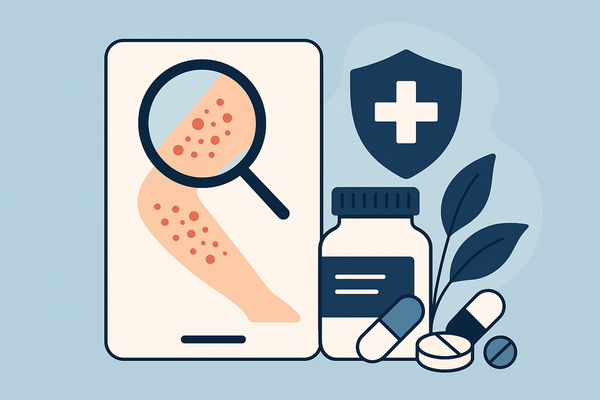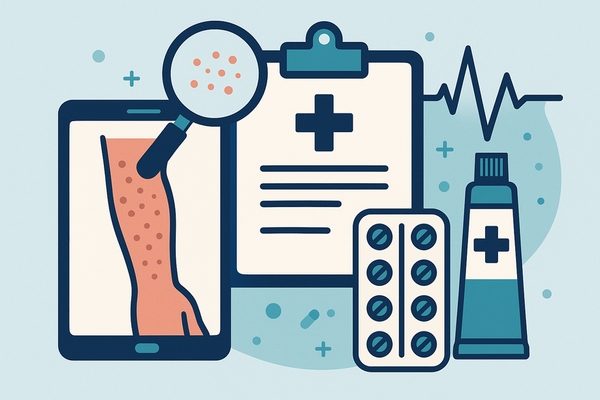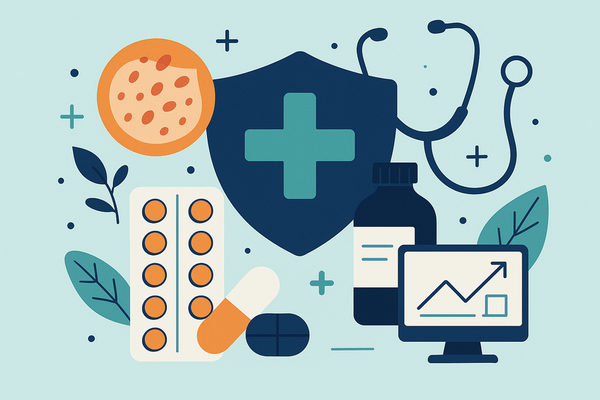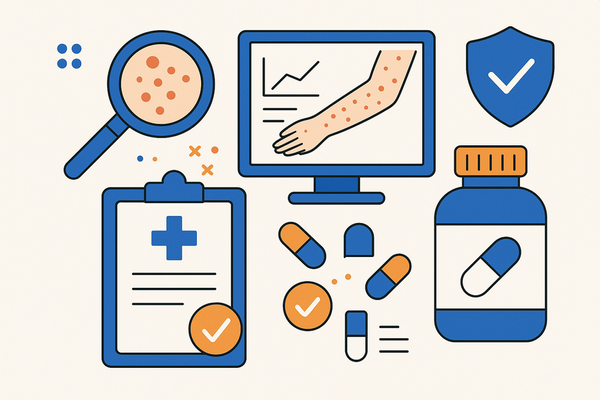Medication Rash Treatment: Identify, Manage, and Prevent Drug-Induced Skin Reactions
Learn how to effectively identify, manage, and prevent medication-induced rashes. Discover key treatment strategies to ensure patient safety and comfort.
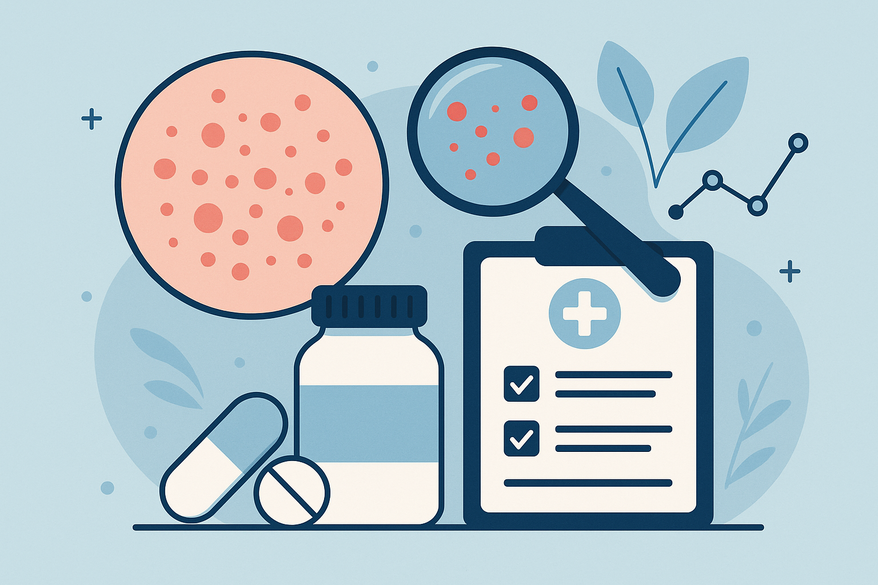
Estimated reading time: 8 minutes
Key Takeaways
- Medication-induced rashes range from mild redness to severe Stevens-Johnson syndrome and TEN.
- Early recognition and prompt discontinuation of the offending drug are critical for safety.
- Management includes cool compresses, antihistamines, and topical or systemic corticosteroids.
- Certain drugs—antibiotics, NSAIDs, anticonvulsants, chemotherapy agents—pose higher risks.
- Prevent recurrence by keeping detailed allergy records and undergoing appropriate testing.
Table of Contents
- Introduction
- Understanding Medication-Induced Rashes
- Causes and Risk Factors
- Recognizing the Signs and Symptoms
- Medication Rash Treatment Options
- Diagnostic Approaches & When to Seek Medical Advice
- Management & Prevention Tips
- Rash Detector Sample Report
- Conclusion
- Sources
- FAQ
Introduction
Medication rash treatment is essential for anyone who develops a skin eruption after taking a drug. In this post, we provide clear, actionable guidance on identifying and managing medication-induced rashes. A medication-induced rash is any skin reaction—red bumps, hives, blistering—caused directly by a drug, distinct from rashes due to infections or environmental allergens. These drug eruptions range from mild, self-limiting redness to severe, life-threatening blistering. In most cases, rashes resolve once the offending medication is discontinued. Early recognition and proper medication rash treatment safeguard patient safety and comfort; tools like Rash Detector can assist with early screening.
Understanding Medication-Induced Rashes
Correct medication rash treatment starts with understanding adverse drug reactions. A medication-induced rash appears soon after starting a new drug and typically fades after stopping it. Unlike eczema from environmental triggers or infections that often include fever or pus, drug eruptions have a clear timeline linked to the medication.
Common eruption types:
- Maculopapular eruptions – Flat, red areas with small, confluent bumps.
- Urticaria (hives) – Raised, itchy welts that come and go.
- Fixed drug eruption – A recurring lesion at the same site, often leaving darker skin.
- Severe blistering – Stevens-Johnson syndrome (SJS) and toxic epidermal necrolysis (TEN) feature widespread epidermal death and mucosal involvement.
Why distinction matters:
- Misdiagnosis may delay proper medication rash treatment.
- Unnecessary therapies (antibiotics or antifungals) may expose patients to risks.
- Early drug cessation prevents progression to severe reactions.
Causes and Risk Factors
Identifying high-risk drugs and patient factors helps tailor medication rash treatment plans. Certain medications and patient traits increase the chance of a drug eruption.
High-risk medications:
- Antibiotics – Penicillins, sulfonamides (e.g., sulfamethoxazole)
- NSAIDs – Ibuprofen, naproxen
- Anticonvulsants – Carbamazepine, lamotrigine
- Chemotherapy agents – Methotrexate, others
Patient risk factors:
- Personal/family history of drug allergies
- Genetic markers – HLA-B*1502 (linked to carbamazepine reactions)
- Concurrent viral infections – Epstein-Barr virus + amoxicillin rash
- Slow acetylator status – Isoniazid metabolism issues
Timing and dosage:
- Onset can be hours to weeks after initiation.
- Severity is not always dose-dependent; small exposures can trigger severe responses.
Understanding these factors aids in preventive medication rash treatment, allowing clinicians to select safer alternatives or pre-treat high-risk patients.
Recognizing the Signs and Symptoms
Early recognition is key to effective medication rash treatment. Rashes vary from mild itchiness to full-blown blistering with systemic signs.
Common presentations:
- Erythema – Redness of the skin.
- Pruritus – Itching, often severe.
- Edema – Localized swelling.
- Lesion types – Papules, plaques, vesicles, bullae.
Severity spectrum:
- Mild – Localized rash, minimal discomfort.
- Moderate – Widespread itching, no mucosal involvement.
- Severe – Blistering, skin peeling, mucous membrane lesions (classic in SJS/TEN).
Early warning signs:
- Rash shortly after starting a new drug.
- Rapid spread or merging of lesions.
- Systemic symptoms – Fever, joint pain, malaise.
Red flags demanding urgent care:
- Difficulty breathing or swallowing.
- Facial or throat swelling.
- Blisters or peeling >10% body surface.
- Eye, mouth, or genital involvement.
Prompt detection empowers timely medication rash treatment and prevents progression to life-threatening stages.
Medication Rash Treatment Options
Choosing the right medication rash treatment depends on rash type and severity. Below are stepwise interventions for symptom relief and restoration of healthy skin.
Immediate action:
- Discontinue suspected drug under clinician supervision.
- Document drug name, dose, start date, and rash onset.
Quick relief measures:
- Cool compresses – Apply for 10–15 minutes, 2–3 times daily.
- Over-the-counter antihistamines – Diphenhydramine 25–50 mg q4–6h; cetirizine 10 mg daily.
- Emollients – Fragrance-free creams; colloidal oatmeal baths to soothe inflammation.
Targeted pharmacotherapy:
- Topical corticosteroids – Betamethasone 0.1% cream twice daily for 7–14 days.
- Systemic corticosteroids – Prednisone 0.5–1 mg/kg oral taper over 1–2 weeks for moderate to severe reactions.
- Hospital-based care – IV steroids or immunoglobulin for SJS/TEN or DRESS syndrome.
Anaphylaxis management:
- Intramuscular epinephrine 0.3–0.5 mg immediately.
- Activate emergency services; supportive airway, breathing, circulation.
Role of healthcare professionals:
- Physicians and dermatologists tailor treatment based on rash severity, patient age, and comorbidities.
- Never restart the offending agent without specialist guidance.
Diagnostic Approaches & When to Seek Medical Advice
Accurate diagnosis guides the safest medication rash treatment strategy. Diagnostics combine clinical evaluation with select tests.
Medical history:
- Detailed medication timeline – start dates, doses, changes.
- Previous drug reactions and comorbid conditions.
Physical exam:
- Lesion morphology and distribution.
- Check for mucosal involvement.
- Tools – Wood’s lamp for subtle pigment changes; dermoscopy for vascular patterns.
Laboratory tests:
- Complete blood count – Eosinophilia suggests DRESS.
- Liver/kidney panels – Assess systemic impact.
- Skin biopsy – Histopathology to differentiate drug eruption vs. dermatologic disease.
- Allergy testing – Patch tests or delayed intradermal tests identify culprits.
Referral guidelines:
- Urgent ER for breathing issues, extensive blistering, systemic symptoms.
- Dermatologist/allergist for complex, recurrent, or diagnostically challenging cases.
Timely diagnosis ensures that medication rash treatment is both precise and effective.
Management & Prevention Tips
Long-term medication rash treatment includes strategies to prevent recurrence and maintain skin health.
Preventing recurrence:
- Keep an up-to-date allergy list; wear medical alert ID if severe.
- Allergy testing protocol – e.g., penicillin skin test prior to cephalosporins.
- Graded re-challenge – Slow drug titration under supervision for essential meds.
Monitoring and record-keeping:
- Maintain a rash diary – Dates, medication changes, symptom notes.
- Report any new skin changes promptly to your provider: Managing Drug Allergy Rash.
Skincare best practices:
- Use gentle, pH-balanced cleansers.
- Apply fragrance-free, hypoallergenic moisturizers.
- Avoid hot water, harsh soaps, and tight clothing.
- Keep cool – Air-conditioned environments reduce itching.
- Scratch prevention – Wear cotton gloves at night.
These prevention measures form a comprehensive medication rash treatment plan for future safety.
Rash Detector Sample Report
After discontinuing the offending drug, tracking your rash’s progress can help guide follow-up care. Below is a sample AI-generated analysis report from the Rash Detector skin analysis app:
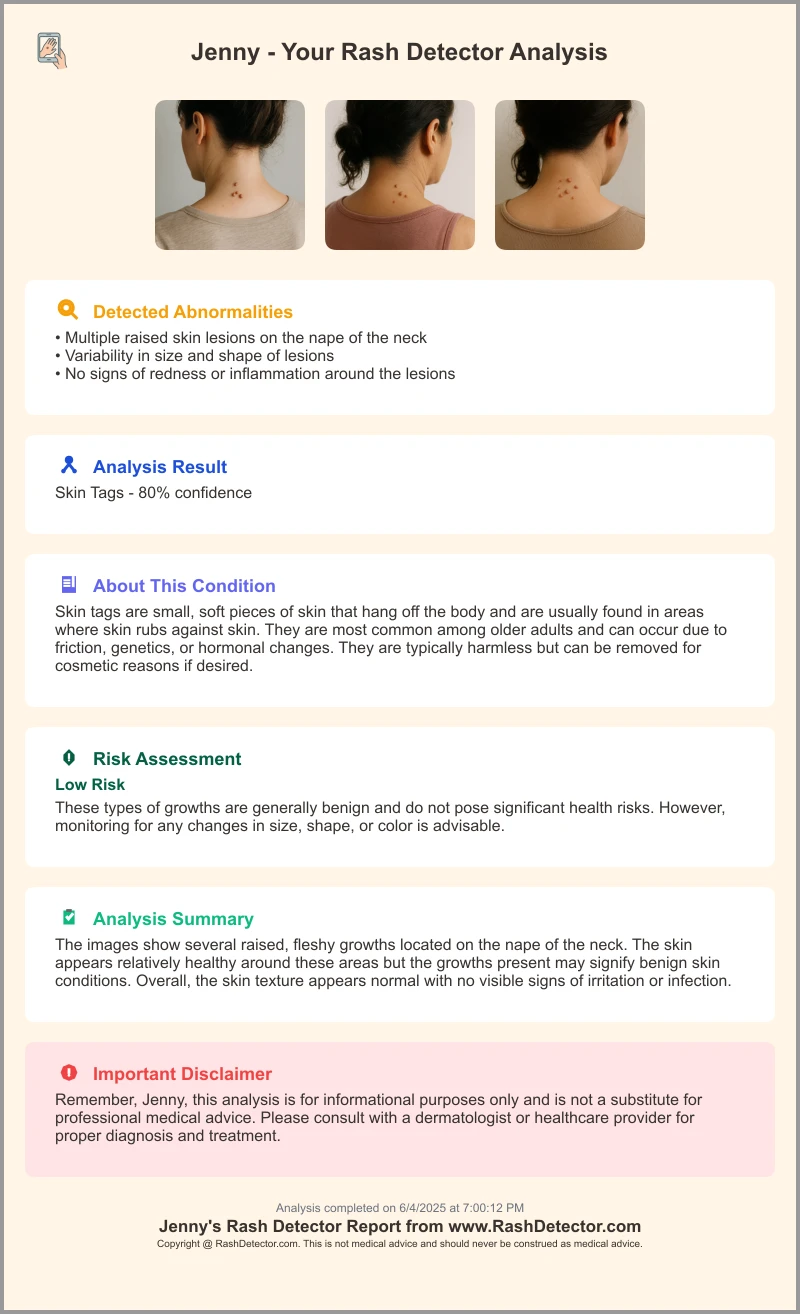
Conclusion
Effective medication rash treatment is a multi-step, patient-centered process. Early identification of drug-induced rashes, prompt discontinuation of the offending agent, and targeted symptomatic care are fundamental. Long-term strategies—keeping detailed drug allergy records, undergoing allergy testing, and adhering to gentle skincare—minimize recurrence and ensure patient well-being. Document any medication reactions, consult healthcare providers for personalized advice, and schedule regular follow-up to safeguard against future drug eruptions. With this proactive approach, you can manage and prevent medication-induced skin reactions effectively.
Sources
- Children’s National Health Library: Drug Rashes
- DermNet NZ: Drug Eruptions
- AAFP: Drug Eruptions Overview
- NYU Langone: Medication for Drug Reactions – Hives
FAQ
- Q: What are the early signs of a drug-induced rash?
A: Look for sudden redness, itching, raised bumps, or hives appearing within hours to weeks after starting a new medication. - Q: When should I discontinue my medication?
A: Consult your healthcare provider immediately if you notice a rash accompanied by fever, facial swelling, or blistering—these may indicate a severe reaction. - Q: Can over-the-counter antihistamines help?
A: Yes, antihistamines like cetirizine or diphenhydramine can relieve itching but do not replace medical evaluation. - Q: Is it safe to restart the drug after the rash resolves?
A: Never restart without specialist guidance; re-exposure can trigger more severe reactions. - Q: How can I prevent future drug rashes?
A: Keep an updated allergy list, undergo allergy testing, and inform all providers of past reactions to tailor safer treatment choices.


